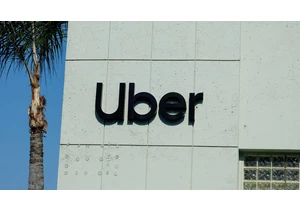SpaceX’s growing constellation of Starlink internet satellites will finally have some U.S.-based company—just not much of it to start. On Monday, Amazon filed an application with the Federal Communications Commission for an experimental license to launch the first two prototype satellites for “Project Kuiper,” its planned answer to Starlink. Amazon’s designs for Kuiper (named after astronomer Gerard Kuiper) involve a full 3,236 small satellites in low Earth orbit to beam broadband to underserved customers. But this giant leap will have to start with two small steps, in the form of the test launches it expects to conduct in the fourth quarter of 2022. The company has signed up a new rocket builder for these prototype missions. And it’s not Blue Origin, the space startup from Amazon founder Jeff Bezos that has now staged two crewed suborbital flights,taking the likes of Bezos himself and actor William Shatner to space. Blue Origin has yet to deliver a payload to orbit. Instead, Amazon will launch its KuiperSat-1 and KuiperSat-2 prototypes into 367-mile-high orbits on ABL Space Systems’ RS1 rockets from Cape Canaveral Space Force Station in Florida, just south of the Kennedy Space Center. [Image: courtesy of Amazon]This small, expendable two-stage vehicle, designed by ABL to launch from any sufficiently large concrete pad, has yet to fly. But that El Segundo, Calif., startup aims to conduct its first mission from Kodiak Island, Alaska before mid-December. Amazon’s blog post and the FCC filing for this launch provide a few more details about the company’s plans for this closed test of Kuiper technology. The post, for example, notes that “one of the two prototype satellites will include a sunshade to help us understand whether it is an effective way to reduce reflectivity and thereby mitigate its impact on ground-based optical telescopes.” Citing early issues with reflections from Starlink satellites that did not feature sunshades, astronomers have worried that the coming constellations of low-Earth-orbit broadband satellites may eventually cloud their own views. The test will also take place on Earth, in the form of one ground station in McCulloch, Tex., and four prototype terminals to be set up in that small town about 110 miles northwest of Austin. The smaller two units among those receivers will incorporate a phased-array antenna only about 12 inches across. But having only two satellites in orbits that low will leave Amazon’s researchers little time to test the system each day. The filing warns: “In total, we predict that each of the satellites will be transmitting or receiving gateway and customer terminal links fewer than 20 minutes per day.” Neither document offers much in the way of details about Kuiper’s ultimate service plans: Amazon says it will deliver 400-Mbps downloads but has not revealed upload speeds, prices, or if the service will come with any data cap. Satellite internet access wars Amazon will have to pick up its pace, both to catch up with Starlink and U.K.-based OneWeb and to meet its own commitments with the FCC. Starlink now has 1,646 satellites at work, per the count maintained by astronomer Jonathan McDowell—enough for SpaceX CEO Elon Musk to declare that the service has exited beta-test status, even though this constellation remains well short of its FCC-authorized total of 4,408 satellites. OneWeb, meanwhile now has 358 of its planned 648 satellites in orbit. All of these constellations share key advantages over the older technology of satellite bandwidth delivered from satellites in geosynchronous orbit: They provide much lower latency, by virtue of not requiring data to take a 44,000-mile round trip, and can provide much higher capacity. Amazon has only announced plans for the first nine Kuiper launches.But Musk has consistently warned that Starlink will only work for the hardest-to-connect customers. And early Starlink adopters have experienced issues with intermittent connections. SpaceX plans to make its service steadier by adding high-speed laser data links between Starlinks that will let them function as an in-space mesh network. (Amazon’s filing and post only describe traditional radio-frequency communication.) Amazon, in turn, has two deadlines set out in the authorization the FCC granted July 30, 2020: It must launch and operate 50 percent of the planned 3,236 satellites by July 30, 2026, then complete the constellation by July 30, 2029. Amazon has only announced plans for the first nine Kuiper launches, which will take place on United Launch Alliance’s Atlas V rockets. That leaves plenty of opportunity for Bezos’s Blue Origin to come into the picture, if it can bring its semi-reusable New Glenn rocket to a pad and into revenue service. Whatever the rockets involved, would-be Kuiper customers should have one reason to think that this satellite system might become a reality on schedule: If there’s one thing an Amazon subsidiary should not fumble, it’s delivery.
Connectez-vous pour ajouter un commentaire
Autres messages de ce groupe

Hackers linked to Russia’s government launched a cyberattack last spring

In a time where tariff price hikes are invading seemingly every

Remember the viral “Ice Bucket Challenge” of 2014? Over a decade later, it’s back—

The U.S. Federal Trade Commission on Monday sued Uber Technologies, accusing it of signing up some Uber One subscribers without their knowled

As Big Tech kicks off its quarterly earnings season this week, the industry’s bellwether companies have been thrust into a cauldron

Weeks ahead of his death, Pope Francis dedicated this month’s prayer intention to

Remember when TikTok went nuts for “Dubai chocolate”? Well, that fervor is now causing an international shortage of pistachios.
The trend took off in 2023 when food reviewer Maria Vehera
